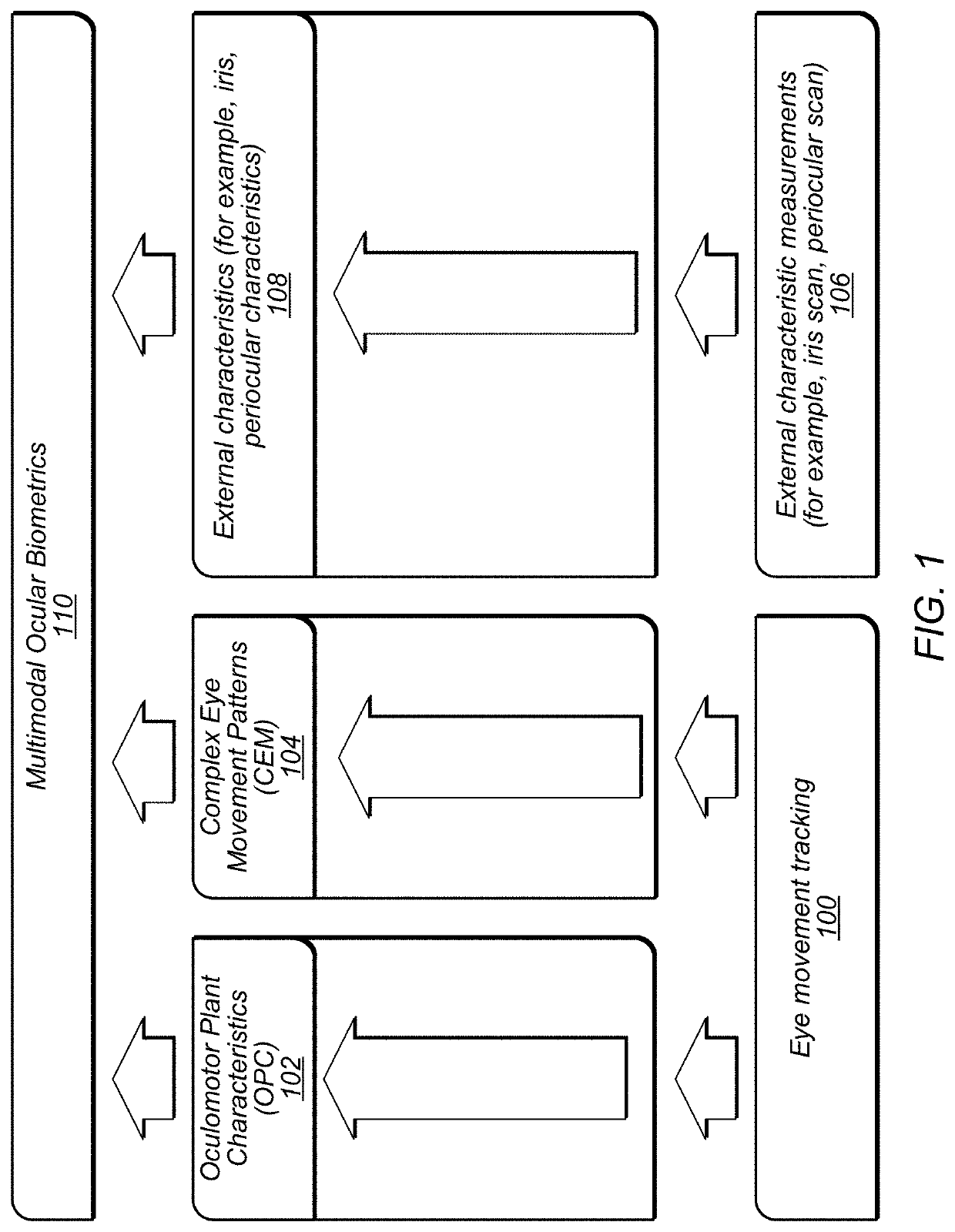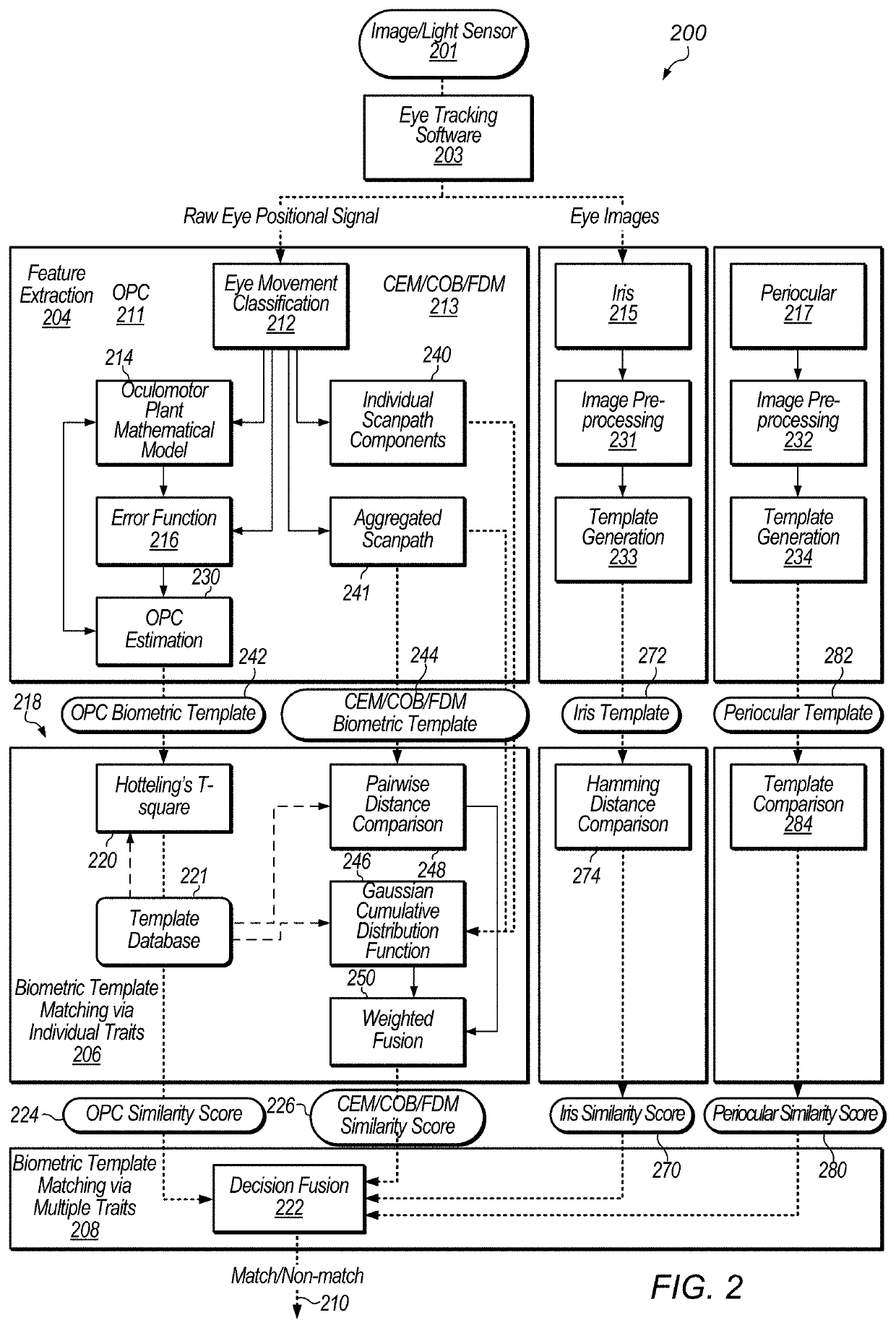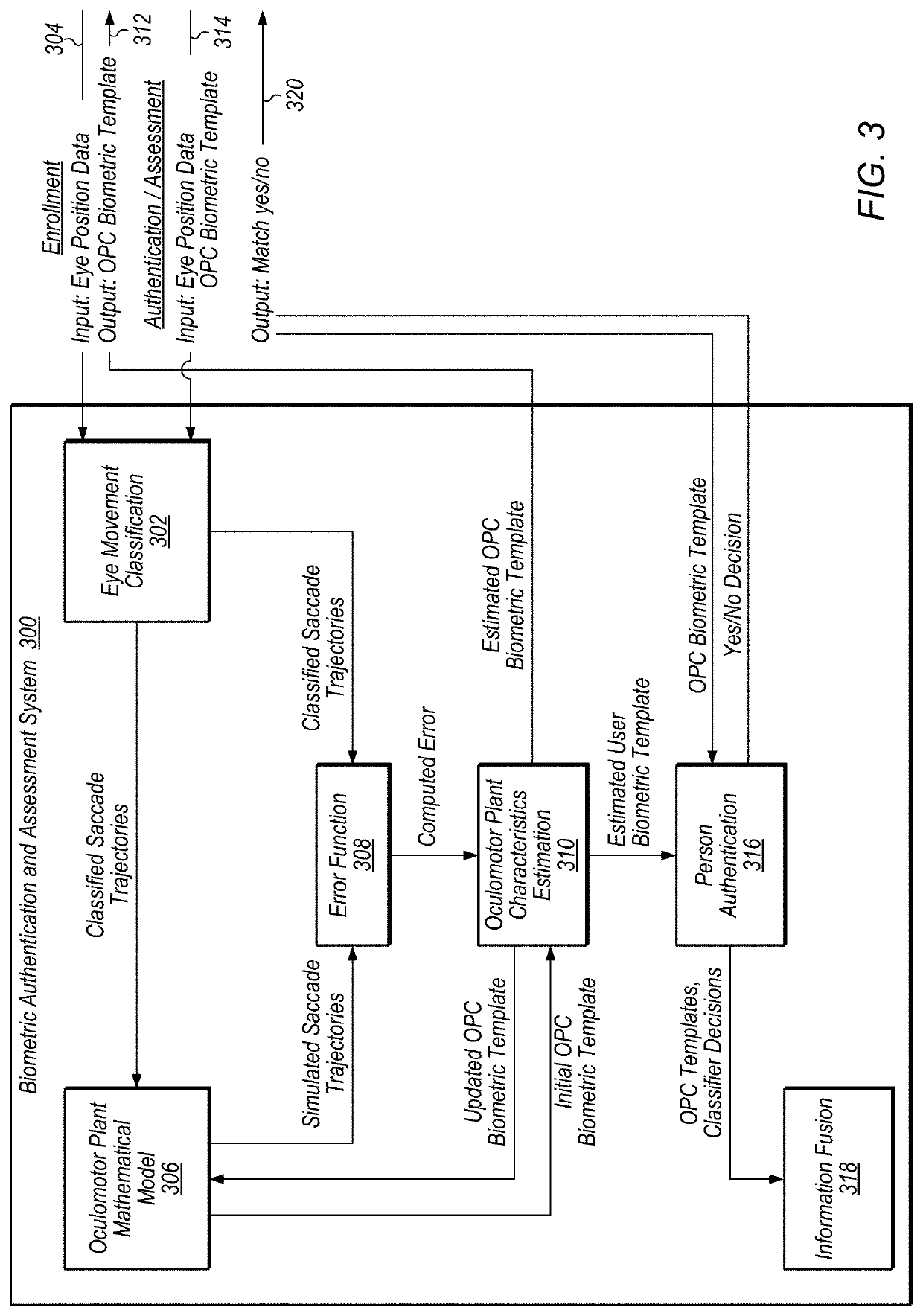Health assessment via eye movement biometrics
a biometric and eye movement technology, applied in the field of person identification, verification, and subject state detection, can solve the problems of password verification, many weaknesses in accuracy, security, and many common methods used for identity determination
- Summary
- Abstract
- Description
- Claims
- Application Information
AI Technical Summary
Benefits of technology
Problems solved by technology
Method used
Image
Examples
Embodiment Construction
[0066]As used herein, traumatic brain injury (“TBI”) means any physical trauma that results in memory loss, altered mental state, loss of consciousness, or focal neurological deficits. TBI may be classified as “mild” (mTBI) when loss of consciousness does not exceed 30 minutes, Glasgow Coma Scale does not exceed 13-15 after 30 minutes, and memory loss does not extend beyond a 24-hour period.
[0067]As used herein, “fixation quantitative score” means the ratio of measured fixation points against the total number of stimuli.
[0068]As used herein, “fixation count” means the total number of measured fixations.
[0069]As used herein, “multi-corrected undershoot” means the number of saccades which undershoot the target stimulus and are followed by more than one corrective saccade.
[0070]As used herein, “fixation duration” means the average fixation duration across a recording.
[0071]As used herein, “vectorial saccade amplitude” represents the average Euclidean distance covered by each saccade.
[0...
PUM
 Login to View More
Login to View More Abstract
Description
Claims
Application Information
 Login to View More
Login to View More - R&D
- Intellectual Property
- Life Sciences
- Materials
- Tech Scout
- Unparalleled Data Quality
- Higher Quality Content
- 60% Fewer Hallucinations
Browse by: Latest US Patents, China's latest patents, Technical Efficacy Thesaurus, Application Domain, Technology Topic, Popular Technical Reports.
© 2025 PatSnap. All rights reserved.Legal|Privacy policy|Modern Slavery Act Transparency Statement|Sitemap|About US| Contact US: help@patsnap.com



